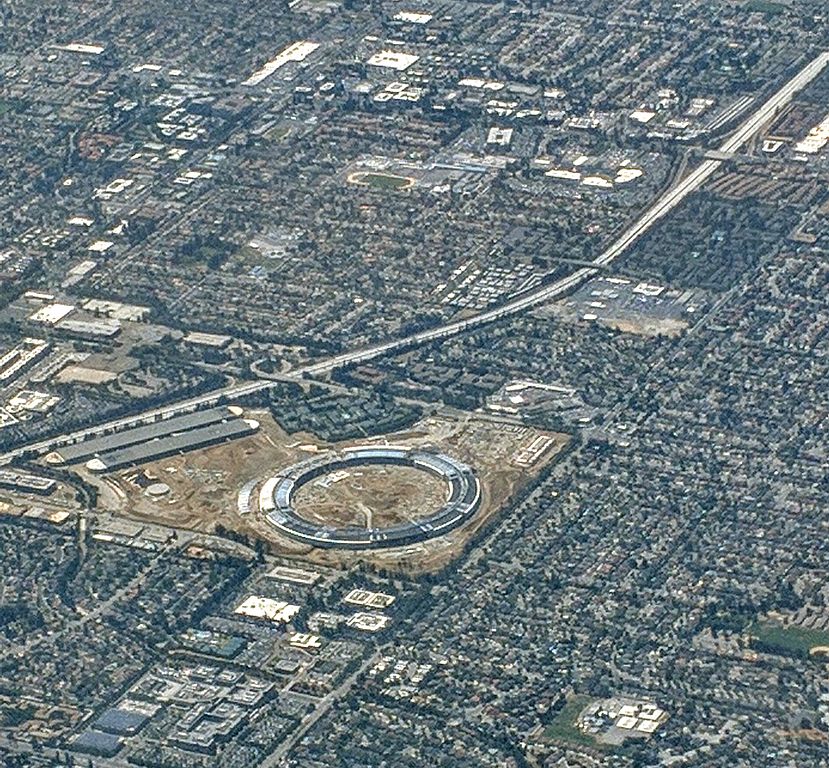
Apple’s five billion dollar office space doesn’t have childcare. WTF?
In most ways, the Apple Park is the slickest office you’ve ever seen.
A two storey yoga studio, a 100,000 square foot gym with walls made to look like the ones in Steve Jobs’ favorite hotel in Yosemite National Park, and an air conditioning system that sucks air through from the natural environment into the office space so employees feel connected to the outside world… it’s pretty insane.
When the journalist from Wired who broke the story of the park to the Internet this morning asked Apple’s Chief Design Officer Jonathan Ive why exactly they needed a four-story glass door, Ive’s response was, “Well, it depends how you define need, doesn’t it?”
Which is funny, because the office-to-end-all-offices seems to be missing one pretty fundamental need: childcare facilities.
It’s not like other companies help their parents care for kids...
It’s not just Apple. Only 4 per cent of employers have childcare available either near or on-site in the US. Facebook built a new housing community near one one of its campuses a few years ago with a pub, bicycle shop, and a hairdresser, but no care facilities.
Not even parental leave is guaranteed – a national law requires mothers to have three months off, but a bunch of terms and conditions mean that a lot of companies can wiggle their way out of giving even that.
...but maybe they should.
You can look at this two ways: either it’s about the money (is providing childcare going to cost you or earn you?) or the principle (should working parents have to choose one or the other?) Unfortunately for Apple, public opinion on both approaches tends to point towards “Provide childcare, you cheapskates.”
On the money question: the evidence shows that you’ll have more productive workers who will make you more money if you make it easy for them to be parents, too. US companies lose $3 billion a year because of child-related absences – 65 per cent of parents have to leave work early or arrive late over once a month. Two thirds of employers find that providing childcare means employees stay on longer. 85 per cent of companies say it improves the quality of the employees they can recruit.
And then there’s just the principle. Over a third of mothers in a recent survey of American women said they do more work at home, compared to just seven per cent of men. The women also said they felt pressured to be both the perfect worker and the perfect mom – which isn’t exactly easy to do when your workplace doesn’t acknowledge that raising a kid takes time.
Race plays a part in the discussion too. Over 70 per cent of black mothers are the primary or sole earner in their household, compared to just under 40 per cent of white mothers. Making them face the choice of going to work, or caring for their child, is all the more unpleasant a decision to have to make if you’re the one bringing home most of the money.
It’s expensive, but not that expensive
So why not pay for it? The obvious reason is the cost of setting it up (though that didn’t seem to have been Apple’s main concern in this case, considering their office cost 5 billion dollars.)
But evidence shows you tend to make the money back. A daycare center for 100 kids would cost around $2 million to create, and $1 million a year to run. But Patagonia, a big American firm with good childcare facilities, say they earned their investment back again from tax credits, increased employee engagement and the fact that every mother who took maternity leave always came back afterwards.
On-site childcare isn’t the only available option, either. Instead of doing it themselves, technology company Intel partnered with a bunch of local childcare centers in the area and paid them to provide childcare for their employees. Another option is to be more flexible about people’s working hours – allowing them to work from home, for example.
Apple probably just thinks someone else should pay for it. Like you. Or the state.
Some people – like Apple, it seems – think it shouldn’t really be the employer’s problem to deal with childcare costs. Either people can pay for it themselves – after all, they did decide to have kids – or it could be funded by tax money.
At the end of the day it’s a question of what kind of company culture you want to create. But it's also a question of how sustainable that culture around parenting and working is. You wouldn’t have much of an economy without children, but if you take all their parents out of the workforce to take care of them, that doesn’t seem to do much good for the economy either.
In Apple’s case, they clearly just don’t feel like they should be the ones to pay the price. Evidence shows that decision might stab them in the back later… good thing they’ve got a yoga studio to help them stay calm when it does.



